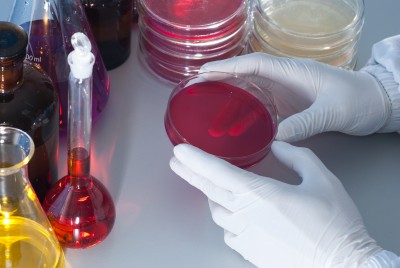When we are thirsty, nothing is better to me than an ice-cold glass of H20. Some people reach for something sweet, some like the carbonation, but us, we love the refreshing feel of ice-cold water. To each their own, right? Like all living things, cells need nourishment, and cell culture media is the  vessel to this nourishment when cells are grown outside the body in a culture dish. Typically, media are water-based liquids that carry basic nutrients cells need to survive: salts, sugars, amino acids, proteins, etc. However, just as the water industry exploded with its various flavors of water, vitamin water, energy water, the cell culture media industry has exploded with so many different types and flavors—and that’s just for the basic cell culture media.
vessel to this nourishment when cells are grown outside the body in a culture dish. Typically, media are water-based liquids that carry basic nutrients cells need to survive: salts, sugars, amino acids, proteins, etc. However, just as the water industry exploded with its various flavors of water, vitamin water, energy water, the cell culture media industry has exploded with so many different types and flavors—and that’s just for the basic cell culture media.
Media for Stem Cell Growth
When it comes to media specific for stem cell growth, they get a bit more complex, but there are still way too many to choose from. Right now, there are at least 10 commercial stem cell media, and we’ve tried at least six in house. Now, a good number of researchers still make their own media. In fact, a lot of people in the stem cell field will tell you that the original homemade pluripotent stem cell media works the best and is the gold standard. Fair enough; we happen to agree. But there is something about ordering a batch of media, all made up for you, tested and quality controlled, that makes you feel good. So we test the new commercial media, compare them to the standard, and decide whether or not to switch. In my experience, most commercial media work just fine in terms of stem cell markers and growth, although they do tend to change the morphology, sometimes drastically. However, when it comes down to it, it is always more expensive and just not worth it for me. In addition, most have established their cultures and experiments using one media, a new media just seemed too drastic a commitment.
More and More Media
This year, at the International Society for Stem Cell Research (ISSCR) conference, a lot of companies talking about their new media. More media. One of the beautiful things about our StemBeads FGF2 product is that it really doesn’t matter what media a researcher wants to use. Whether they want to remain old school and make their own, or buy the latest and greatest culture media—it doesn’t matter. All they have to do is add StemBeads FGF2 to it, and the benefits of a sustained growth factor environment will be realized. It is almost like a pancake mix. Just add water. Except in our case, the water is cell culture media, and it doesn’t matter which flavor you like. Let it Bead.
What cell culture media are you using in your experiments?
If you enjoyed this post, please consider subscribing below to our monthly newsletter through which we provide stem cell scientists information on the most current research topics and tools to help them constantly improve their stem cell culture experience.
To Successful Research,
StemCultures
Information for scientists by scientists on all things related to stem cell growth including stem cell culture, culture medium, tissue culture, fibroblast growth factor (fgf2) and more.
Note: StemCultures facilitates posting on this blog, but the views and accounts expressed herein are those of the author(s) or interviewee(s) and not the views or accounts of StemCultures its officers or directors whose views and accounts may or may not be similar or identical. StemCultures, its officers and directors do not express any opinion regarding any product or service by virtue of reference to such product or service in this blog.
